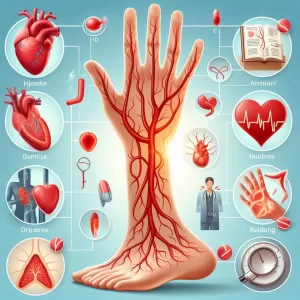الشفط والحقن لعلاج كيس العظام
التعريف والنظرة العامة
Aspiration and injection is one treatment option offered to those diagnosed with bone cysts. Aspiration involves the removal of fluid buildup while injection refers to the introduction of bone marrow or steroid solution into the cyst cavity to promote bone growth.
A bone cyst is a type of lesion that can occur anywhere in the skeletal system. It is characterised by a hole that develops inside a bone and is often filled with fluid. Occasionally, a cyst can also be empty. Though this condition can occur among adults, it is more common among children and young adults. Bone cysts are typically benign and do not progress into malignancy. Mostly asymptomatic, they can only cause health problems if they have become large and impact the bone’s integrity and strength. Some cysts are discovered accidentally, when bones get fractured even during a minor injury.
There are three types of bone cysts, namely:
- Simple bone cysts, which typically occur in proximal humerus or femur, where the metaphysis of the long bones are located
- Aneurysmal bone cysts, which typically occur in the legs, pelvis, spine, or upper arms. The bone where the aneurysmal cyst grows usually contains blood, thus the name.
- Traumatic bone cysts, which are usually associated with the jaw or the mandibles and develop as a result of trauma. They may contain fluid or can be completely empty.
Apart from aspiration and injection, other treatment options considered for bone cysts include curettage and bone grafting, as well as adjuvant cryotherapy, sclerotherapy, selective arterial embolisation, and ethibloc injections. The goals of noninvasive techniques in treating bone cysts are to preserve the bone structure, avoid injury to its overlying muscles, and minimise any disruption to the blood supply.
من يجب أن يخضع للنتائج المتوقعة
This procedure is typically offered to patients diagnosed with a unicameral or simple bone cyst. There are no known causes for this condition. A unicameral bone cyst can either be active or latent. If a paediatric patient is diagnosed with this type of bone cyst, the physician typically advises a wait-and-see approach, especially if the cyst is relatively small, does not impact the patient’s well-being, and is not in contact with a growth plate. However, a large-sized cyst may cause pain and discomfort, warranting treatment.
Patients who are suffering from an active unicameral bone cyst are often advised to undergo aspiration and injection. This type of cyst is usually in contact with a growth plate. It increases the bone’s risk for fracture since the cyst can cause brittleness and bone weakness. A bone cyst is sometimes manifested as a bump that is unsightly to look at. Young adults and older patients could also undergo aspiration and injection of bone cyst if the condition has a significant impact on their quality of life. Examples of these effects include the formation of bone deformity or uneven length of limbs.
This procedure helps control the growth of bone cyst to preserve bone strength and integrity. Among children, where the incidence of cyst recurrence is higher, aspiration and injection provides a method of managing the condition over an extended period of time. There is also a high rate of healing following this type of treatment, as lesions are typically resolved. Bone strength is also regained as new bone cells develop in spaces where the fluid was aspirated.
Patients are typically discharged on the same day of the procedure. They need to rest for several days, especially if the affected bones are located in the limbs. In most cases, patients have to schedule several treatment sessions of injecting bone marrow or steroid after aspirating the fluid buildup inside the cyst. They also need to monitor the affected bone and check if the lesion has regressed.
Despite the potential of recurrence, this condition typically resolves itself as the patient gets older and the bones stop growing.
كيف يتم إجراء العملية؟
The patient is placed under general anaesthesia and the site over the planned aspiration is sanitised with an antiseptic solution. Using fluoroscopy, the surgeon determines the location of the cyst as well as thinnest part of the bone cyst that the needle can easily penetrate. With imaging guidance, a long needle is then inserted percutaneously until the cyst is reached. The fluid is then suctioned off through the needle using a vacuum inside the syringe. A contrast material is then introduced into the cyst cavity to check if it has smaller chambers still filled with fluid. The physician would then proceed to drain these compartments, if present. This step could be repeated several times until the cyst cavity is empty of the fluid. The surgeon could also disrupt the lining of the cyst using a specialised surgical tool called a trocar. A needle could also be used for this purpose. The procedure is repeated if there are other cavities identified in the bone. If blood is mixed in the aspirated fluid, a sample may be sent to the laboratory for further examination.
For bone marrow injection, the surgeon aspirates or harvests bone marrow from the anterior iliac crest, located near the hipbone. Using a separate needle, the bone marrow is then injected into the bone cyst. The amount of bone marrow injected is equal to the exact amount of fluid aspirated from the cyst. The physician should take care to fill the cavity completely, as studies indicate that incomplete filling of the chest cavity contributes to recurrence.
In cases when bone marrow is not available or is not indicated, steroid could be used as replacement. The surgeon slowly injects a dosage of methylprednisolone into the cavity. Once filled, the needle is withdrawn, and the procedure is complete. A small bandage can be used to cover the injection site. No dressing is required.
المخاطر والمضاعفات المحتملة
The patient could develop adverse reactions to anaesthesia. The procedure could cause delayed bone growth as a result of injuring the growth plate. The cyst can recur in the same bone location or could develop in adjacent areas. Some patients experience angular deformity following the procedure.
مراجع:
Canale ST. Aneurysmal bone cyst within benign tumors of bone. Campbell’s Operative Orthopaedics. 9th ed. St. Louis, Mo: Mosby Year-Book; 1998. Vol 1: 690.
Bullough PG, Vigorita VJ. Aneurysmal bone cyst within benign non-matrix-producing bone tumors. Orthopaedic Pathology. 3rd ed. Baltimore, Md: Mosby-Wolfe; 1997. 402-4.
/ trp_language]
**Bone Cyst Aspiration and Injection: A Comprehensive Guide**
**Q: What is a bone cyst?**
A: A bone cyst is a fluid-filled cavity within a bone, most commonly occurring in children and adolescents.
**Q: What causes bone cysts?**
A: The exact cause of bone cysts is unknown, but factors such as trauma, infection, and developmental abnormalities may contribute.
**Q: What are the symptoms of a bone cyst?**
A: Bone cysts can be asymptomatic or cause pain, swelling, and weakened bones that are prone to fractures.
**Q: How is a bone cyst diagnosed?**
A: Diagnosis involves a thorough examination, X-rays, CT scans, or MRI scans to visualize the cyst.
**Q: What is bone cyst aspiration?**
A: Aspiration is a procedure to remove the fluid from a bone cyst using a needle and syringe. This can relieve pain and reduce the risk of complications.
**Q: What is bone cyst injection?**
A: Injection involves injecting medication or bone-forming material into the cyst to promote healing and fill in the cavity.
**Q: What is the treatment process for bone cysts?**
A: Treatment recommendations vary based on the size, location, and symptoms of the cyst. Conservative management may involve aspiration alone or observation. Surgical removal may be necessary if the cyst is large or causing significant complications.
**Q: How long does it take for a bone cyst to heal?**
A: Healing time varies depending on the type of cyst and treatment. Small cysts may resolve spontaneously within a few months, while larger cysts may take up to a year or more to heal completely.
**Q: Are there any complications from bone cyst treatment?**
A: Complications are rare but may include infection, bleeding, nerve damage, or recurrence of the cyst.
**Q: When should I seek medical attention for a bone cyst?**
A: Consult a healthcare professional promptly if you experience persistent bone pain, especially after an injury or trauma. Early diagnosis and treatment can prevent further complications.
**Additional Tips for Enhancing Search Engine Visibility:**
* Use relevant keywords in your content, such as ”bone cyst aspiration,” “bone cyst injection,” and “bone cyst treatment.”
* Include location-specific information if applicable, such as “bone cyst aspiration in [city name].”
* Optimize for mobile devices by using responsive design.
* Use high-quality, informative images and videos.
* Promote your content on social media and other online channels.
2 تعليقات
اترك ردّاً
المقالات الشعبية








What does aspiration and injection entail for treating a bone cyst
Aspiration and injection involves draining the fluid from the cyst and injecting a corticosteroid medication into the cyst wall. This helps to reduce inflammation and promote bone healing.